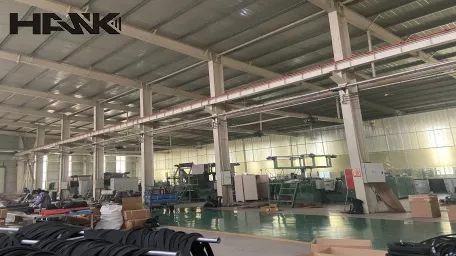- Arabic
- French
- Russian
- Spanish
- Portuguese
- Turkish
- Armenian
- English
- Albanian
- Amharic
- Azerbaijani
- Basque
- Belarusian
- Bengali
- Bosnian
- Bulgarian
- Catalan
- Cebuano
- Corsican
- Croatian
- Czech
- Danish
- Dutch
- Afrikaans
- Esperanto
- Estonian
- Finnish
- Frisian
- Galician
- Georgian
- German
- Greek
- Gujarati
- Haitian Creole
- hausa
- hawaiian
- Hebrew
- Hindi
- Miao
- Hungarian
- Icelandic
- igbo
- Indonesian
- irish
- Italian
- Japanese
- Javanese
- Kannada
- kazakh
- Khmer
- Rwandese
- Korean
- Kurdish
- Kyrgyz
- Lao
- Latin
- Latvian
- Lithuanian
- Luxembourgish
- Macedonian
- Malgashi
- Malay
- Malayalam
- Maltese
- Maori
- Marathi
- Mongolian
- Myanmar
- Nepali
- Norwegian
- Norwegian
- Occitan
- Pashto
- Persian
- Polish
- Punjabi
- Romanian
- Samoan
- Scottish Gaelic
- Serbian
- Sesotho
- Shona
- Sindhi
- Sinhala
- Slovak
- Slovenian
- Somali
- Sundanese
- Swahili
- Swedish
- Tagalog
- Tajik
- Tamil
- Tatar
- Telugu
- Thai
- Turkmen
- Ukrainian
- Urdu
- Uighur
- Uzbek
- Vietnamese
- Welsh
- Bantu
- Yiddish
- Yoruba
- Zulu
Jul . 28, 2024 12:04 Back to list
Exploring the Benefits and Features of V-Belt B76 for Enhanced Performance and Durability
Understanding V-Belt B 76 Importance and Applications
V-belts, particularly the B76 variant, play a crucial role in various mechanical systems. Recognized for their versatility and efficiency, V-belts are integral components in the transmission of power between pulleys in a wide range of machinery. The B76 is commonly used in several applications, including industrial equipment, agricultural machinery, and automotive systems.
What is a V-Belt?
A V-belt is a type of belt that has a cross-section resembling a V, which allows it to fit snugly into the grooves of a pulley. This unique design enables the belt to grip the pulley securely without slipping, thus efficiently transferring power. The dimensions and specifications of a V-belt are defined by its length and width, which directly influence its performance and compatibility with various machines. The B76 designation indicates a specific size, with 76 inches being the nominal length, making it suitable for medium to large systems.
Characteristics of the B76 V-Belt
The B76 V-belt is designed to accommodate specific load capacities and operational requirements. Typically made from rubber compounds reinforced with fabric and cord, these belts exhibit durability, flexibility, and resistance to wear. The B76 variant can operate effectively in moderate temperature ranges and has excellent tensile strength, essential for applications that involve heavy loads.
One significant feature of V-belts, including the B76, is their ability to operate quietly and smoothly, which is critical in environments where noise reduction is necessary. Additionally, the design of the V-belt allows for easy installation and replacement, minimizing downtime during maintenance.
v belt b 76

Applications of the B76 V-Belt
The B76 V-belt finds extensive use across various industries. In manufacturing and industrial settings, it is often employed in conveyor systems, pumps, and fan drives, playing a pivotal role in ensuring efficient operation. Agricultural machinery, such as tractors and harvesters, also employs B76 V-belts to power attachments and implements, demonstrating its versatility in handling different types of loads.
In the automotive sector, V-belts, including the B76, are essential for driving accessories like alternators, water pumps, and air conditioning compressors. The reliable power transmission offered by these belts contributes significantly to the overall performance and efficiency of the vehicle.
Importance of Proper Maintenance
Maintaining the B76 V-belt is essential for ensuring its longevity and optimal performance. Regular inspections can help identify signs of wear, such as cracking or fraying, allowing for timely replacement. Proper tensioning is another critical factor; an adequately tensioned belt will operate efficiently, while a loose or over-tightened belt can lead to premature failure.
Conclusion
In conclusion, the B76 V-belt is a vital component in numerous mechanical systems, offering reliability and efficiency across diverse applications. Whether in industrial machinery, agricultural equipment, or automotive systems, the performance of these belts significantly impacts overall functionality. Understanding the characteristics and maintenance of the B76 V-belt ensures its effective use, ultimately contributing to enhanced productivity and longevity in the machinery it serves. As industries continue to evolve, the role of components like the B76 V-belt will remain integral to meeting the demands of modern mechanical operations.
-
Upgrade Power Steering Pump Belt for Smooth, Quiet Operation
NewsAug.27,2025
-
Precision Timing Belt & Chain: Engine Performance & Durability
NewsAug.26,2025
-
Precision Lathe Drive Belts: Durable & Reliable Performance
NewsAug.25,2025
-
84.5 Serpentine Belt: Durable & Precision Fit for Your Engine
NewsAug.24,2025
-
Premium Ribbed Drive Belts for Quiet Power Transmission
NewsAug.23,2025
-
High-Performance Vehicle Timing Belt for Engine Precision
NewsAug.22,2025

